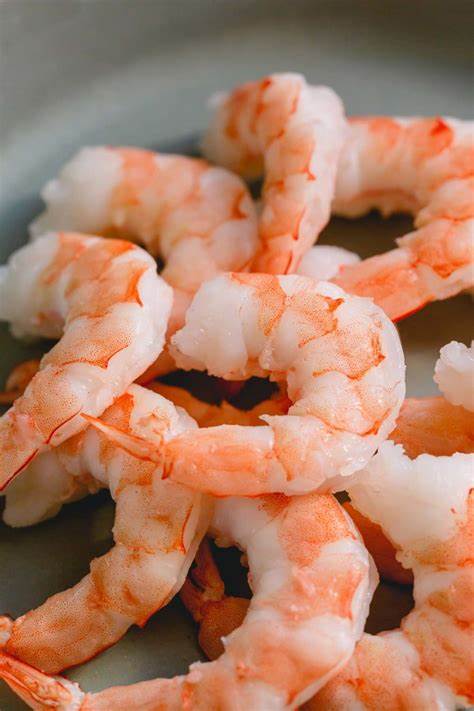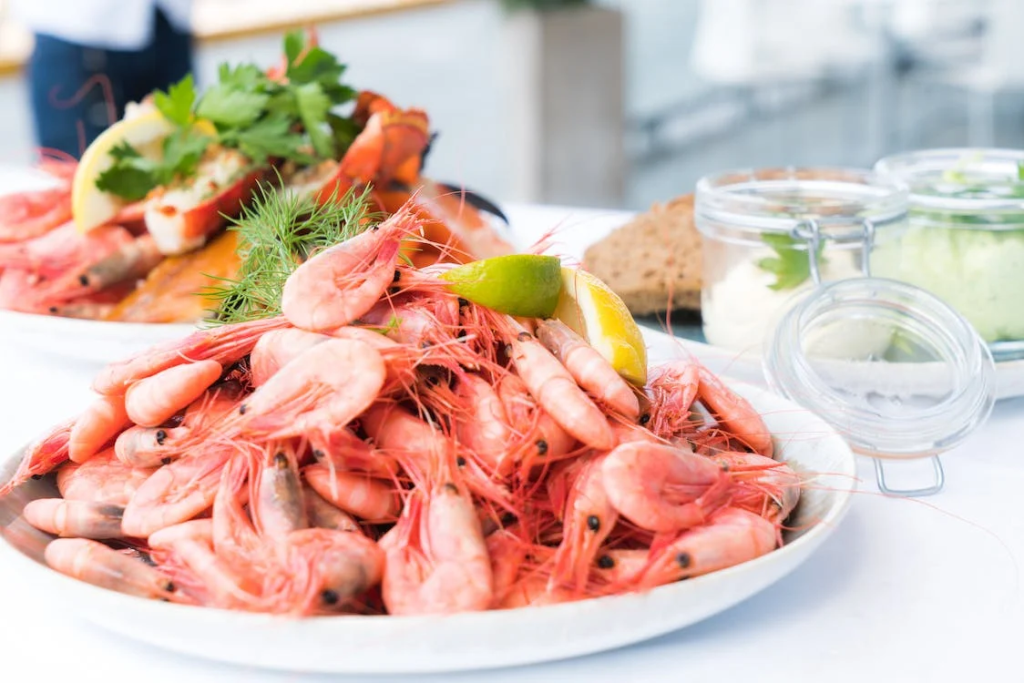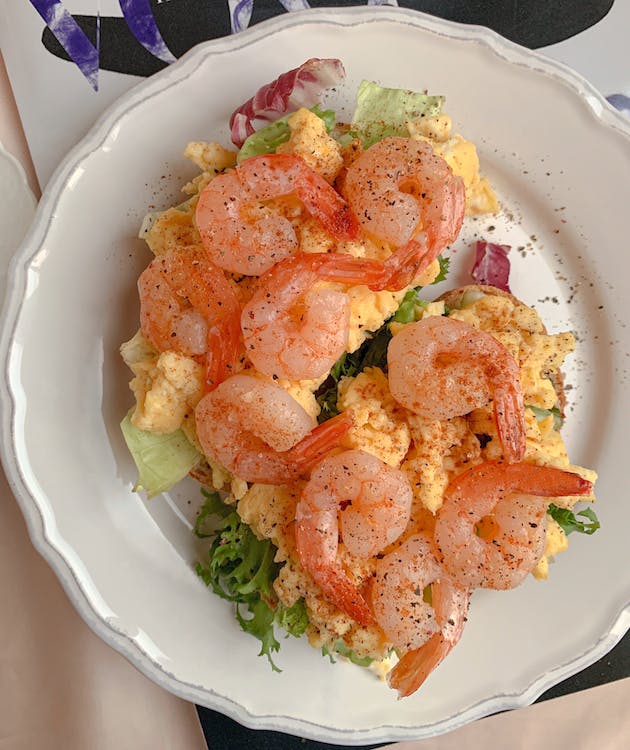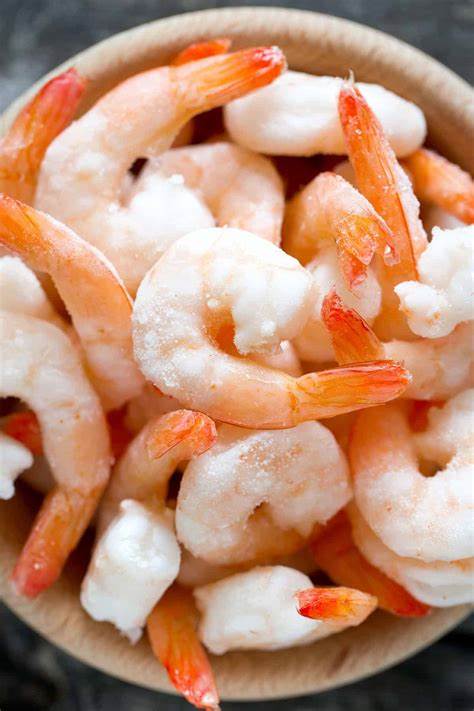Seafood like shrimp can make a tasty treat for humans, but can dogs eat shrimp too? Or is shrimp bad for dogs to consume? The answer isn’t quite black and white.
While shrimp can provide some nutritional value for dogs, there are also risks of allergies, contaminants, and digestive issues. How can shrimp fit into your dog’s diet safely?
In this article, we’ll look at the benefits and risks of feeding shrimp to dogs. We’ll also discuss proper serving guidelines and safe preparation methods. Let’s dive in.
Is Shrimp Good or Bad for Dogs?
Shrimp meat itself contains several beneficial nutrients, including:
- Protein – Shrimp is high in protein, providing a lean source for muscle maintenance.
- Vitamin B12 – Shrimp contains vitamin B12 important for energy and red blood cell production.
- Selenium – This antioxidant helps support a healthy immune system.
- Phosphorus – Essential for kidney function, nerves and energy utilization in dogs.
So in moderation, plain boiled shrimp can make a healthy supplemental treat for your dog.
However, there are also some risks with feeding shrimp:
- Allergies – Shellfish allergies can develop and cause adverse reactions.
- Preservatives – Salt, seasonings and preservatives may be toxic.
- Heavy metals – Shrimp can contain mercury, arsenic and other heavy metals.
- Food-borne Illness – Raw or undercooked shrimp may harbor Salmonella and other bacteria.
So while shrimp meat offers nutritional pros, it also comes with some cons to consider. Feeding properly prepared shrimp in small amounts can allow your dog to reap the benefits safely.

Can Dogs Eat Cooked Shrimp?
Thoroughly cooked, peeled shrimp is the safest way to feed this seafood. The high temperatures kill potentially harmful bacteria. Peeling the shrimp first removes the indigestible shell while retaining the meat.
To prepare cooked shrimp for your dog:
- Purchase raw, fresh or thawed shrimp and peel entirely. Rinse well.
- Boil, bake or grill the shrimp until opaque and cooked through.
- Chop the shrimp into bite-size pieces for your dog if large.
- Allow to cool before serving a few pieces to your dog as a treat.
Avoid feeding dogs any uncooked or undercooked shrimp due to risk of Salmonella or other pathogens. Only offer fully cooked shrimp.
Can Dogs Eat Shrimp Tails and Shells?
It’s best to remove the shell, tail, legs, and veins of shrimp before feeding to dogs. The tough external shells are indigestible and pose a choking hazard. The tail spikes specifically can get lodged internally and cause damage.
If you do feed shrimp with the shells still on, at minimum peel away the spiky tail portion to reduce risk. Better yet, remove shells entirely.

Can Dogs Eat Raw Shrimp?
No, raw shrimp should be avoided for dogs. As mentioned, raw shellfish poses a high risk for Salmonella and Listeria transmission.
These food-borne bacteria can cause vomiting, diarrhea, fever, and even sepsis or meningitis in rare cases. Only offer your dog thoroughly cooked shrimp after a full boil, bake, or grill.
Can Dogs Eat Shrimp Scampi and Garlic Shrimp?
Avoid feeding dogs any shrimp dishes with seasonings and flavorings, like shrimp scampi or garlic shrimp. Ingredients like garlic, butter, oil, salt, onion, pepper and herbs can cause gastrointestinal upset. Garlic and onions are also toxic to dogs when consumed in large amounts.
For safety, stick to plain boiled or grilled shrimp without any added seasonings or sauces.
Can Dogs Eat Canned Shrimp?
When buying pre-cooked shrimp, read labels carefully and avoid products with additives. Canned shrimp or pre-packaged shrimp cocktail often have high sodium levels and preservatives that are unhealthy for dogs.
Look for low-sodium plain canned shrimp with no added flavorings or preservatives as the safest option. But peeled, cooked frozen shrimp works well too.

Feeding Guidelines and Serving Size
When served in moderation, plain cooked shrimp can make an occasional nutritious treat. Use these feeding tips:
- Start with very small serving sizes to test for allergies.
- Offer just a few small pieces 1-2x per week at most. Too much can cause gastrointestinal upset.
- Avoid feeding shrimp with the shells or seasonings which can be harmful.
- Introduce it along with your dog’s regular diet – not as a full meal replacement.
- Chop or cut shrimp into small, bite-size pieces appropriate for your dog’s size.
- Discontinue feeding shrimp if any signs of allergic reaction or digestion issues.
Talk to your veterinarian about introducing new proteins like shrimp to get their specific recommendations for your dog.
Common Questions about Dogs and Shrimp
Can puppies eat shrimp?
No, avoid feeding any shrimp to puppies under one year old. Their digestive systems can’t yet handle the high protein and fat content.
Is shrimp high in cholesterol for dogs?
Yes, shrimp contains high cholesterol levels. This isn’t an issue for healthy dogs, but should be limited in dogs with liver or heart disease.
What shrimp can diabetic dogs eat?
Opt for low-sodium boiled shrimp for diabetic dogs, and serve in very small portions as an occasional treat.
Can dogs eat shrimp tails?
No, never feed dogs the sharp, spiky tails of shrimp. The shells are indigestible and the tails pose a major choking risk.
Should I peel shrimp before feeding dogs?
Yes, always peel and devein shrimp before feeding it to dogs. The shells are a choking hazard and provide no nutritional value.
In summary, fully cooked plain shrimp, given sparingly, can make a healthy supplemental treat for most dogs. Be cautious of any additives, seasonings, shells, raw shrimp due to the risks. Check with your vet and monitor your dog’s reaction. When in doubt, avoid shrimp entirely to be safest.



